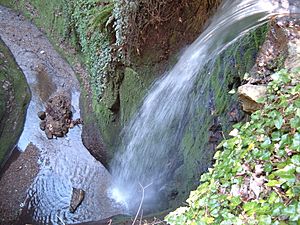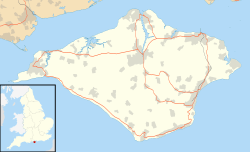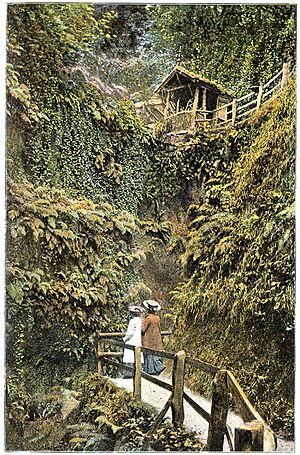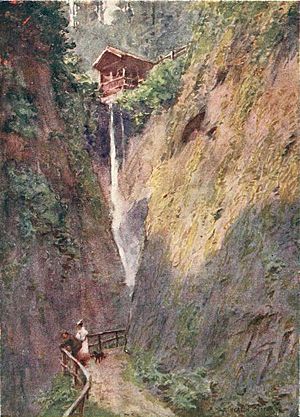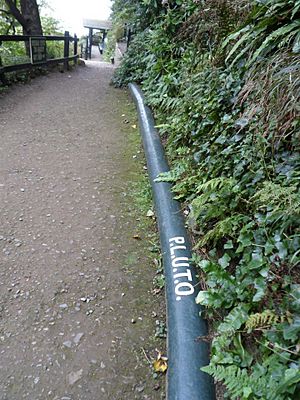Shanklin Chine facts for kids
Shanklin Chine is a famous natural spot and tourist attraction in Shanklin, a town on the Isle of Wight, England. It's a beautiful, wooded valley with waterfalls, lots of trees, and green plants. Visitors can explore it using special paths and walkways. There's also a heritage center where you can learn about its long history.
Contents
What is a Chine?
A chine is a local word used on the Isle of Wight. It means a deep, narrow valley or gorge that a stream has carved into soft cliffs. Shanklin Chine was created over the last 10,000 years. It cuts through soft rocks called Lower Greensand sandstones, which are from the Cretaceous period. This was the time when dinosaurs lived!
In the late 1800s, people put stones at the top of the waterfall to slow down how fast the chine was growing. You can still see many natural springs flowing out of the cliff faces inside the chine. The Isle of Wight has several chines, but Shanklin Chine is the biggest one left. It drops about 32 meters (105 feet) to sea level and is just over 400 meters (a quarter of a mile) long. The whole area covers about 1.2 hectares (three acres).
History of Shanklin Chine
Before the Victorian era, Shanklin was just a small village. People mostly farmed or fished. The fishing community lived right at the bottom of the chine. The area only started to grow in the early 1800s. Like many other chines on the south side of the Island, Shanklin Chine was often used by smugglers in the past.
A Beautiful Place for Visitors
Shanklin Chine became one of the first tourist attractions on the Isle of Wight. People started visiting it as early as 1817. The famous poet John Keats stayed in Shanklin in 1819. He found inspiration for some of his poems there. He wrote: "The wondrous Chine here is a very great Lion; I wish I had as many guineas as there have been spy-glasses in it." This means he thought it was a huge attraction, like a famous animal in a zoo, and many people came to see it.
Many artists, like Thomas Rowlandson and Samuel Howitt, also loved to paint Shanklin Chine. Descriptions from that time sound very similar to how the chine looks today. People described it as a mix of beauty and grandeur. They talked about the tall cliffs, the stream flowing to the ocean, and the winding paths.
Shanklin Chine in World War II
During the World War II, Shanklin Chine was used by soldiers. It became an assault course for the Commandos, who were special forces soldiers. Their headquarters was nearby at Upper Chine School. The 40 Royal Marine Commando unit trained there for the Dieppe Raid in 1942. This was a big military operation during the war.
A special fuel pipeline, part of something called Operation Pluto, also ran through the chine. Operation Pluto stands for "Pipeline under the Ocean." About 65 meters (65 yards) of this pipeline is still kept at the chine for visitors to see.
PLUTO was one of the big secret successes of the war. The idea came from Lord Louis Mountbatten, who later became the governor of the Isle of Wight. During the D-Day invasion in 1944, pipelines from Shanklin Chine and Sandown carried petrol. This fuel traveled 65 miles (105 kilometers) under the English Channel to Cherbourg in France. This helped power the Allied forces during the invasion.


